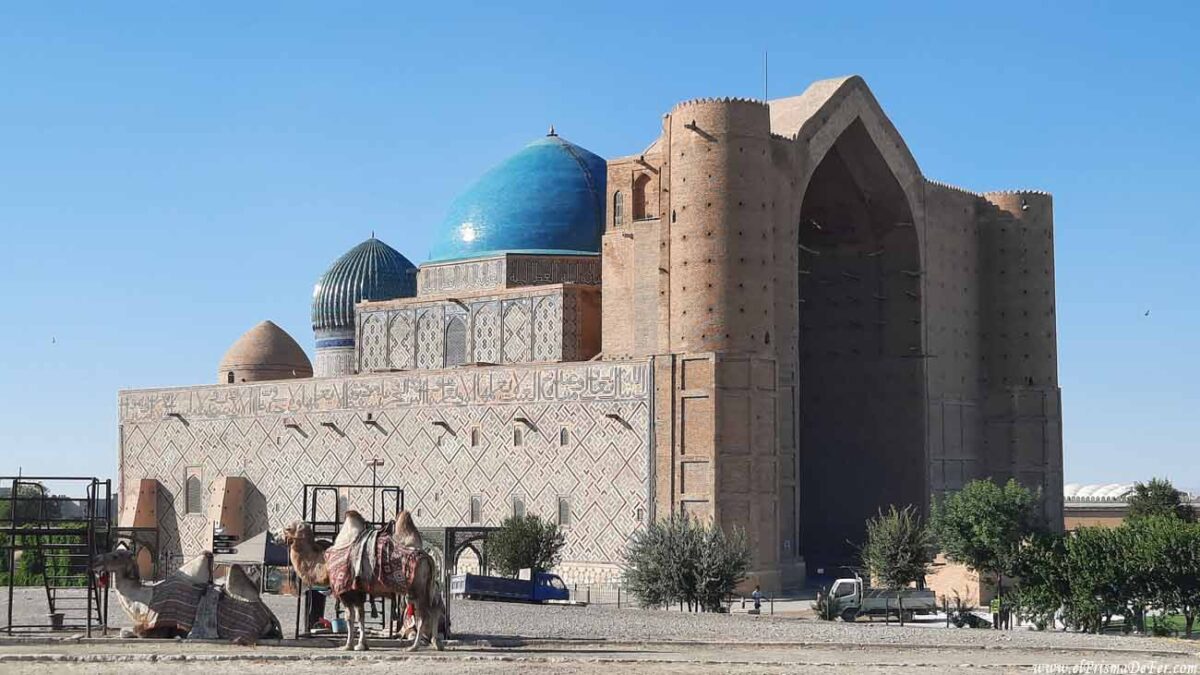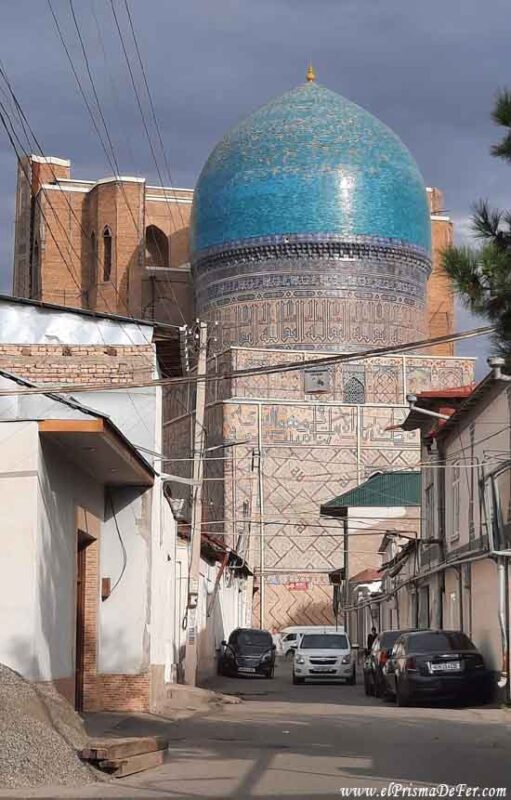Bukhara is a city that breathes glorious history. Its perfectly preserved old town transports you back to a time when Silk Road caravans rested. Everything seems frozen in time: the adobe facades, the centuries-old madrasas, the shaded courtyards, and the vendors still trading in what were once ancient bazaars. Walking through its cobbled streets is like leafing through a living history book, where every corner holds a historical event... a whisper of the past.
Although Samarkand often grabs the headlines for its majesty, Bukhara has a more intimate vibe. A city where you don't have to rush from attraction to attraction, but simply let yourself go, among minarets that cut the sky and squares that come alive at sunset. Without a doubt, it was one of the most beautiful places during my time in Uzbekistan.
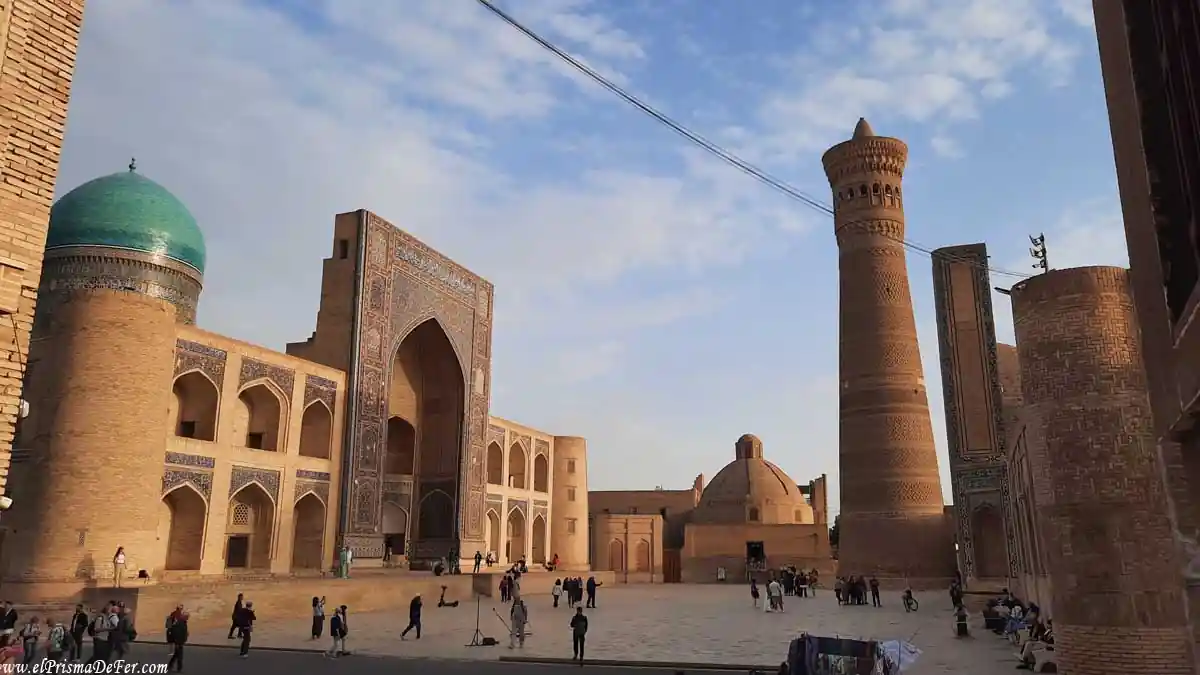

Table of Contents
A look at the history of Bukhara
Bukhara is not just an ancient city: it's one of Central Asia's most important historical gems. With over 2,500 years of history, it was a key hub on the Silk Road, where merchants, scholars, pilgrims, and conquerors left their mark as they crossed the heart of the Islamic world.

For centuries, Bukhara was a center of learning and spirituality, known for its religious schools (madrasas), imposing mosques, and vibrant cultural life. In the 10th century, under the Samanids, it reached its first great splendor, becoming one of the beacons of Islam, comparable to cities like Baghdad or Damascus. Later, under the Timurid Empire and then the Khanates of Bukhara, the city continued to grow in influence, embellishing itself with architecture that still dazzles today.
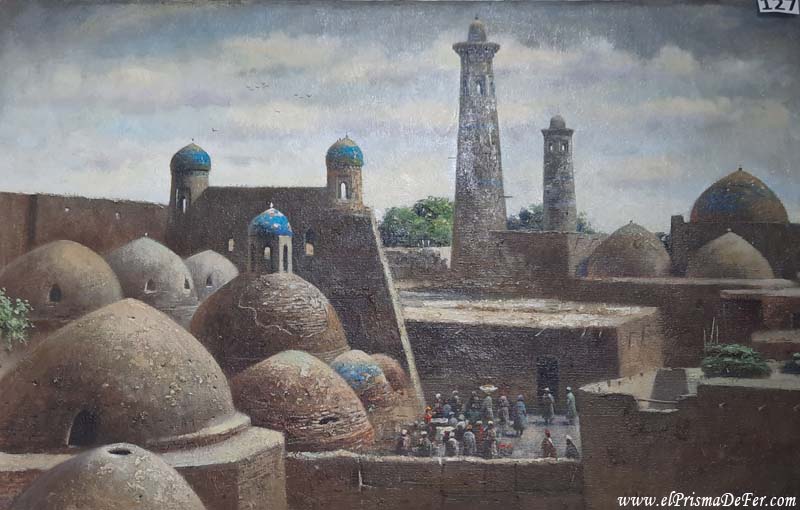
Despite invasions from the Mongols to the Russians, Bukhara managed to maintain its identity and medieval layout, which is why its historic center was declared a UNESCO World Heritage Site. Today, visiting Bukhara is like opening a door to that legendary past, walking through the same corridors that thousands of people have walked for centuries.
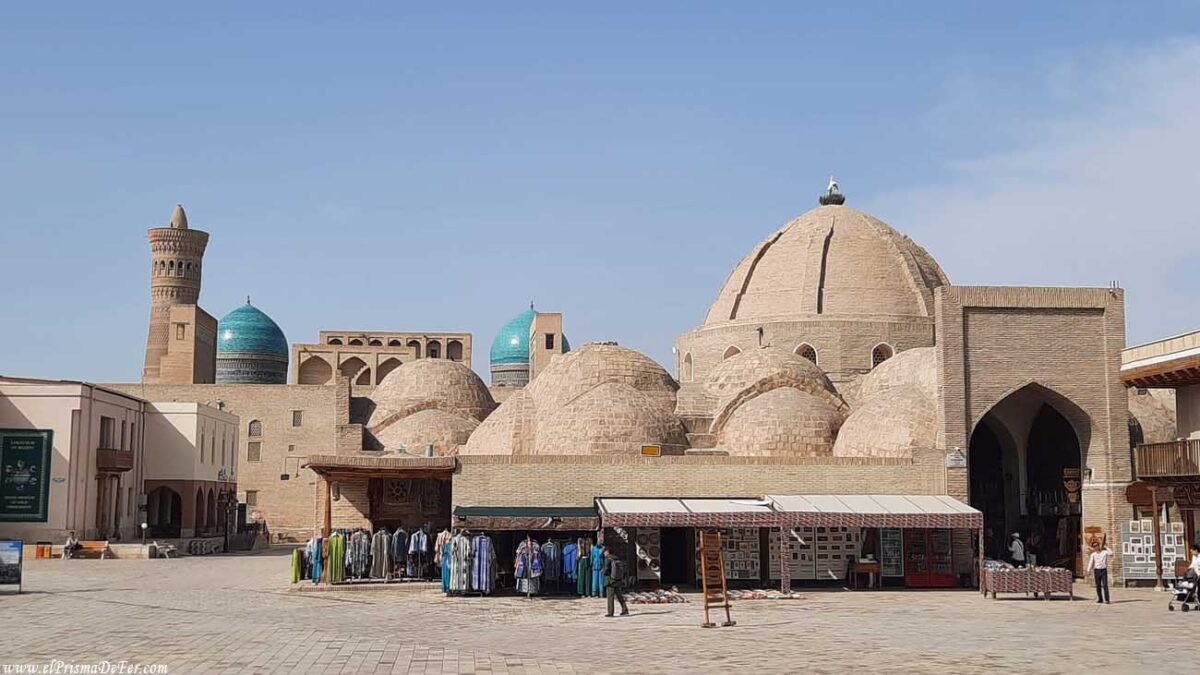
If you want to know the route I took in Uzbekistan, you can read my two-week travel itinerary through the country.
Bukhara and mass tourism
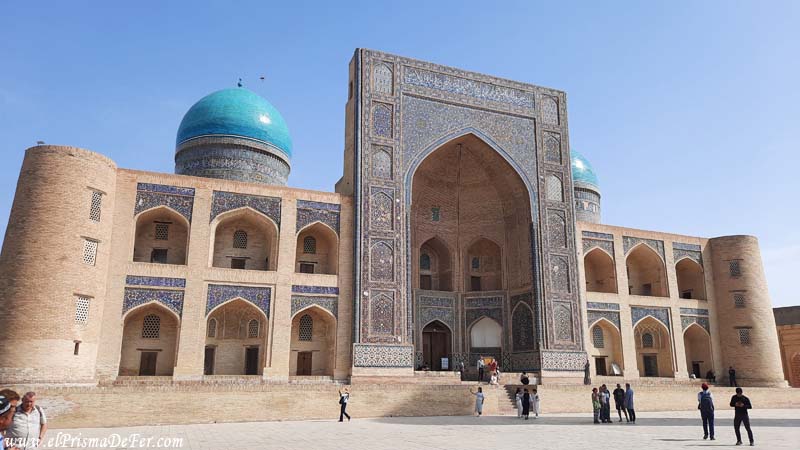
Bukhara, with its ancient atmosphere and narrow adobe streets, used to be a place where one could feel like they'd traveled back in time. But today, the city is experiencing a marked tourist boom. Organized groups, especially European and Chinese, arrive daily, filling its squares, madrassas, and markets. While this has revitalized the local economy and improved infrastructure, it has also changed the atmosphere: some of the calm that characterized the city is lost, and it's not uncommon to feel that some locals view us more as wallets than genuine travelers.
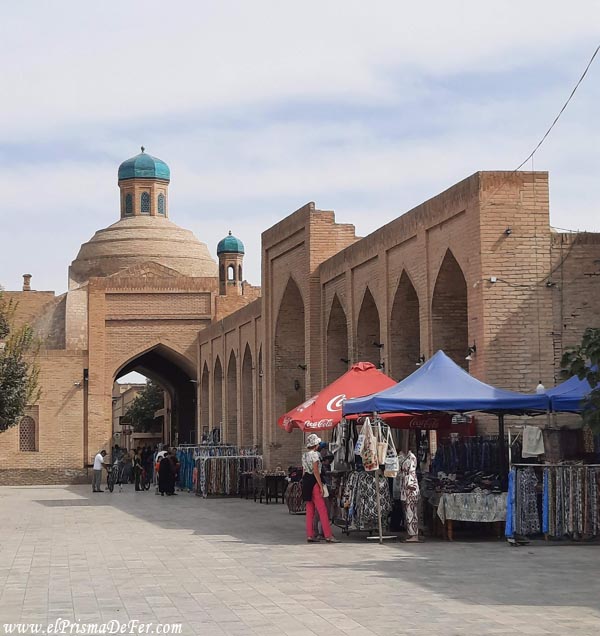
Even so, Bukhara still has a soul. Whether you walk early in the morning or late in the evening, straying from the main streets or staying a few days longer, you can recapture that intimate connection with local history and life. You just have to look a little beyond the organized tourism scene to discover the true essence of this Silk Road gem.

How to get to Bukhara
Bukhara is very well connected to other major cities in Uzbekistan, making it very easy to reach, even for independent travelers.
🚆 By Train
One of the most convenient and recommended ways is by train. Uzbekistan has a modern and efficient rail network. From Tashkent, Samarkand or even Khiva, you can take high-speed trains (such as the Afrosiyob) or slower but cheaper trains. The trip from Samarkand, for example, takes about 1.5 to 2 hours.
From the Uzbekistan Railways or ETicket.uz sites you can see schedules, prices, and even buy tickets online.
🚌 By bus or shared taxi
There are also medium-distance buses and shared taxis between cities, a popular option among locals. They're cheaper, but less comfortable and punctual. If you choose this route, be prepared for some negotiation and slightly longer journeys.
✈️ By Plane
Bukhara has a small international airport (BHK), with regular flights from Tashkent and some limited international connections. If you're short on time or coming from abroad, this can be a good option, although domestic flights aren't as frequent.
🚗 On your own
If you're taking a road trip through Uzbekistan, arriving by car is entirely feasible. The main roads are in good condition, although it's advisable to have an offline GPS and some patience with local traffic in small towns.
How to get from Bukhara Train Station to the Old Town
Bukhara's railway station, known as Kagan Station (Bukhara-1), is not located in the Old City itself, but in the village of Kagan, about 12 kilometers from Bukhara's historic center. This is important to keep in mind when planning your arrival, especially if you're arriving by express train from Samarkand or Tashkent.
From the station, the most practical and fastest way is to take a taxi. You'll find several drivers waiting outside, although it's advisable to negotiate the price before getting in. The usual fare is between 20,000 and 30,000 Uzbekistani soms (approximately $2 to $3 USD), depending on the time and your bargaining skills.
Another cheaper option is to use Yandex Go, the most popular taxi-hailing app in Uzbekistan, similar to Uber. It's reliable, has fixed rates, and saves you time arguing about prices.
If you prefer public transport, there is a marshrutka (minivan) stop leaving from the station, which go towards the center, although it is a bit confusing to know which one to take, know that they exist, because I took it to get closer to my accommodation.
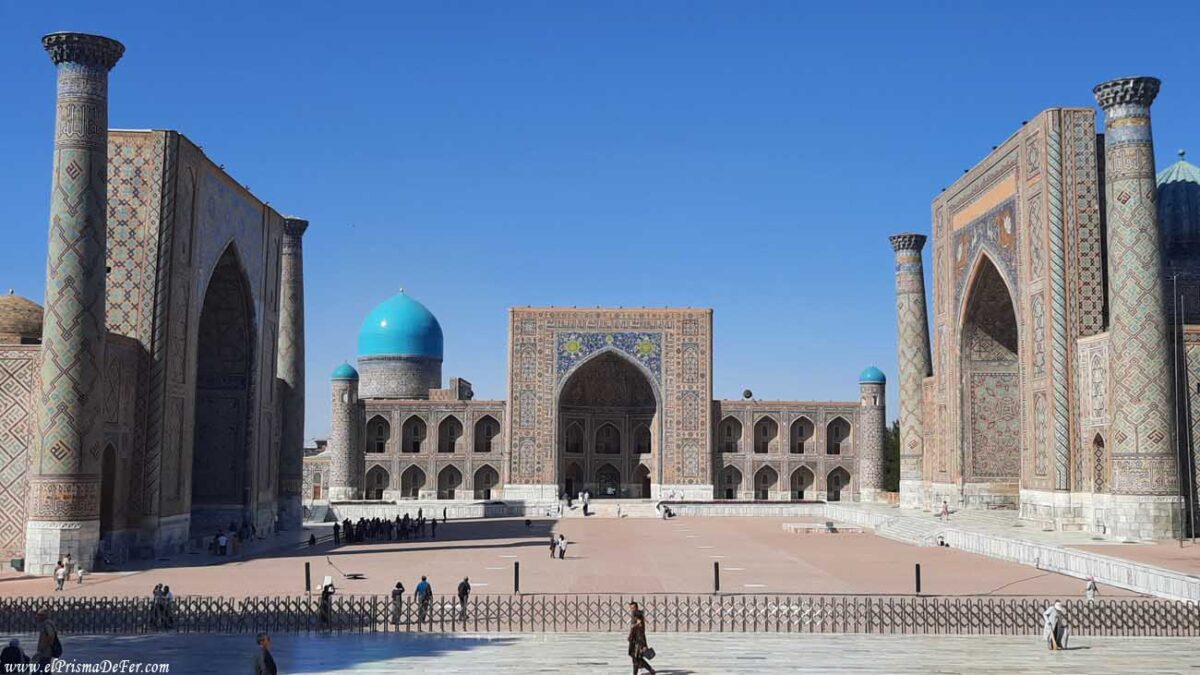
You may be interested in reading the Guide I wrote for visiting Uzbekistan on your own, with all the information you'll surely need to get around the country.

Map with the main attractions of Bujara
What to see in Bukhara
Bukhara is packed with historical monuments, hidden courtyards, and an atmosphere that invites leisurely exploration. Here are some of the must-see places:
Walking Tour
A free walking tour in Bukhara is the best way to start getting to know the city. While it's not free, as it works based on tips, it helps you get your bearings quickly, you learn history and anecdotes from a local guide and, in the process, you can meet other travelers. You can book your free walking tour here.
🕌 Lyabi-Hauz Square
Lyabi-Hauz Square is one of the most picturesque and lively corners of Bukhara. Its name means "by the pond," and that's exactly what it is: a square built around a 17th-century artificial pond, which still retains its period charm. In a country as dry as Uzbekistan, this water feature was vital and also a social meeting place. Today, it continues to fulfill that role: under the shade of centuries-old mulberry trees, locals and travelers relax, drinking tea, chatting, or simply watching the passage of time.
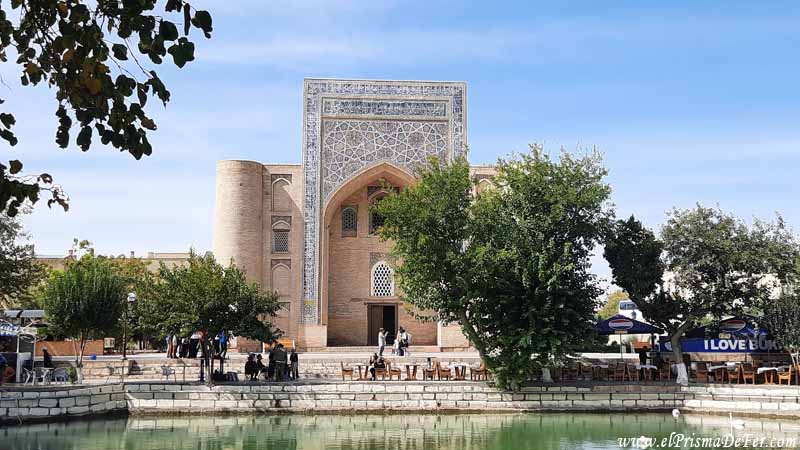
Surrounding the pond are three notable buildings: the Kukeldash Madrasa, the Nadir Divan-Begi Madrasa, and a khanaka (a lodge for dervishes). The harmony between architecture and open space gives it a unique feel. At dusk, the square comes alive with street musicians, artisans, and terraces where you can eat plov or drink local beer. It's an excellent place to feel the current pulse of a city with centuries of history.
🏛 Kukeldash Madrasa and Nadir Divan-Begi Madrasa
The Kukeldash Madrasa, built in 1568, is one of the largest in Central Asia. It served as a Koranic school and student residence. Its sober and symmetrical architecture reflects the Timurid style, with a grand façade and an interior courtyard surrounded by cells where the students lived. Although not the most ornate in the city, it conveys a sense of solemnity that speaks to the role Bukhara played as a religious and educational center for centuries.
Opposite it, the Nadir Divan-Begi Madrasa is the complete opposite: its façade shines with blue and gold mosaics depicting peacocks, an atypical motif in Islamic iconography. It was originally built as a caravanserai, but quickly converted into a madrasa. Its decoration reflects the Persian influence and the cultural openness of the period. Today, both function as cultural centers, with craft shops and nightly shows that revive Sufi and folklore traditions.
🧱 Kalyan Minaret and Kalyan Mosque
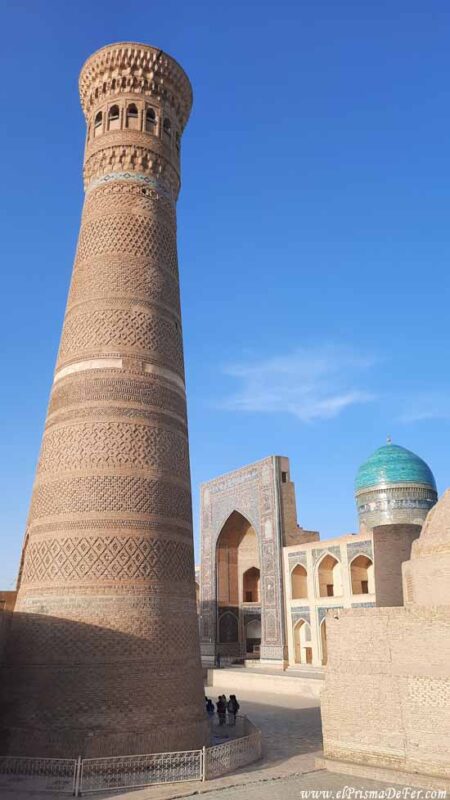
The Kalyan Minaret is, without a doubt, the symbol of Bukhara. Standing almost 48 meters tall and with over 900 years of history, it has survived earthquakes, wars, and invasions. It was built in 1127 by the architect Bako, commissioned by the Karakhanid ruler Arslan Khan. Its function was multiple: a call to prayer, a guide for travelers, and also a symbol of religious power. Legend has it that Genghis Khan, seeing its grandeur, decided not to destroy it, a rare gesture of respect from the famous conqueror.
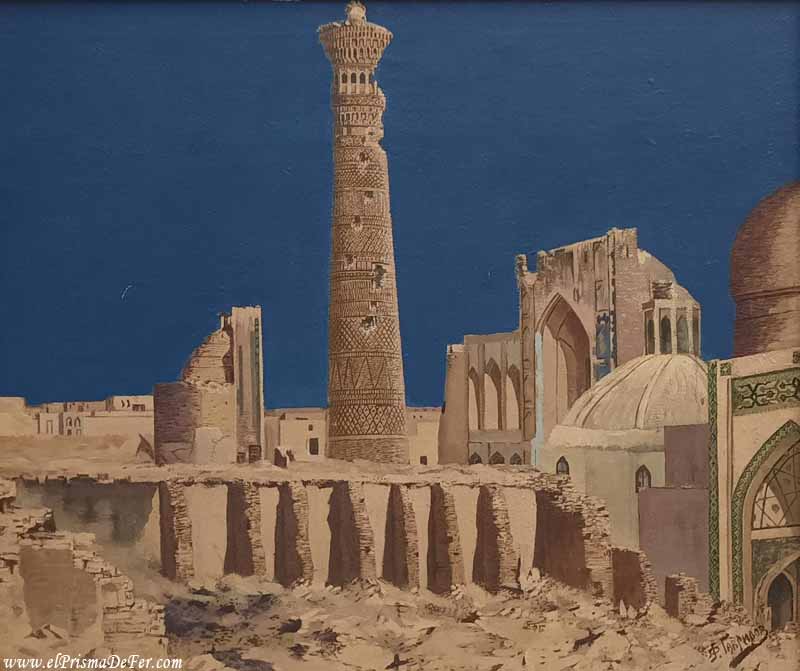
Next to it stands the Kalyan Mosque, one of the largest temples in Central Asia. Its spacious courtyard, blue-domed galleries, and sense of perfect proportion make one feel small in the face of spirituality and history. Built in the 16th century on the site of a previously destroyed mosque, the current structure reflects the peak of Islamic architecture of the period. Despite its size, its atmosphere is serene and contemplative.
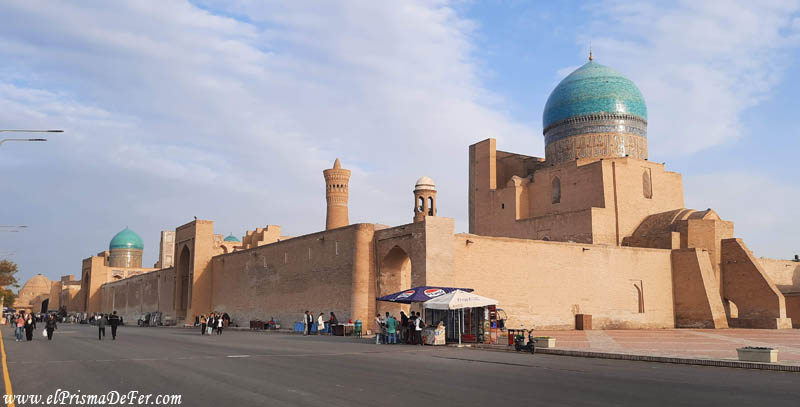
⛩ Caravanserai and covered bazaars
Bukhara was a key junction on the Silk Road, as evidenced by its caravanserais and covered bazaars. These spaces served as lodging, warehouses, and exchange centers. Today, structures such as Toqi Sarrafon (Money Changers' Market), Toqi Telpak Furushon (Hat and Textile Market), and Toqi Zargaron (Jewelers' Market) still retain their original domes and vaulted passageways echoing with the trade of yesteryear.

Walking through these bazaars is like reliving the atmosphere of a lively, bustling city. Although many stalls today sell souvenirs, carpets, or ceramics, the merchant soul of Bukhara remains intact. Some shops still make their products by hand, maintaining techniques passed down from generation to generation. It's the ideal place to buy an authentic souvenir and, in the process, imagine what commercial life was like centuries ago.
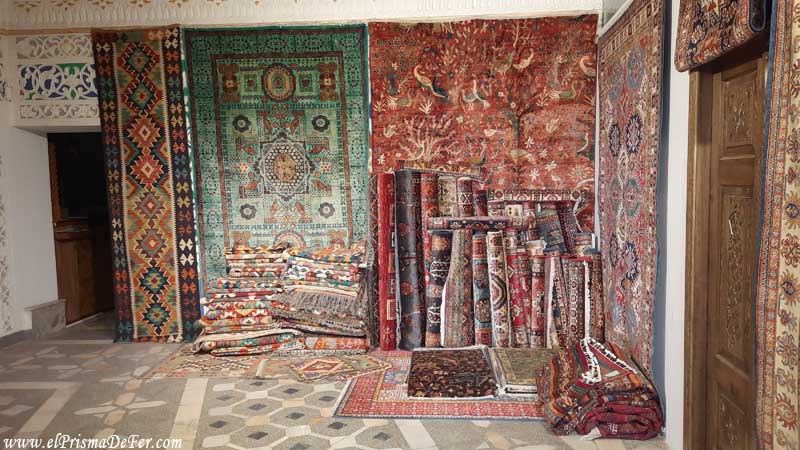
🧿 Ark Fortress
The Ark Fortress is the oldest fortress in Bukhara, with origins dating back to the 5th century AD. For centuries, it was the residence of the emirs, a city within a city. Although it was partially destroyed by Russian bombing in 1920, it still preserves several pavilions, museums, and structures that tell the history of power in Central Asia. Its sloping façade, as if emerging from the desert sands, is imposing.
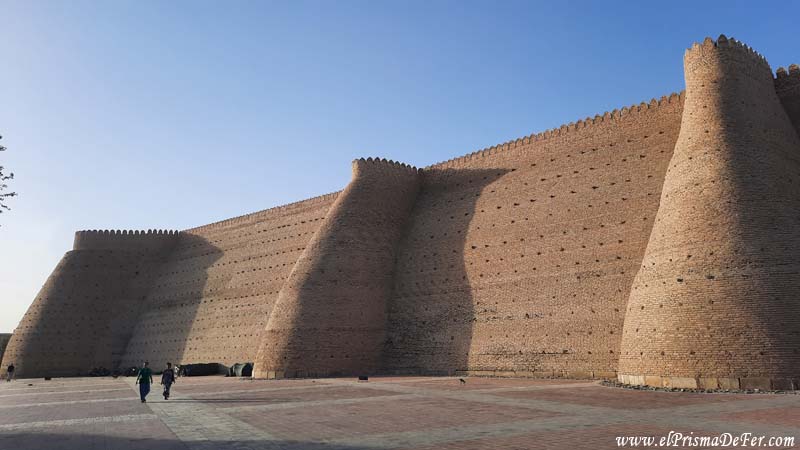
Inside, you can visit ancient throne rooms, private mosques, and exhibits on the city's history and court life. From its walls, you have a privileged view of the Old City, allowing you to understand the scale and urban layout of Bukhara. Visiting the Ark is essential to understanding the political and symbolic importance this city held for centuries.
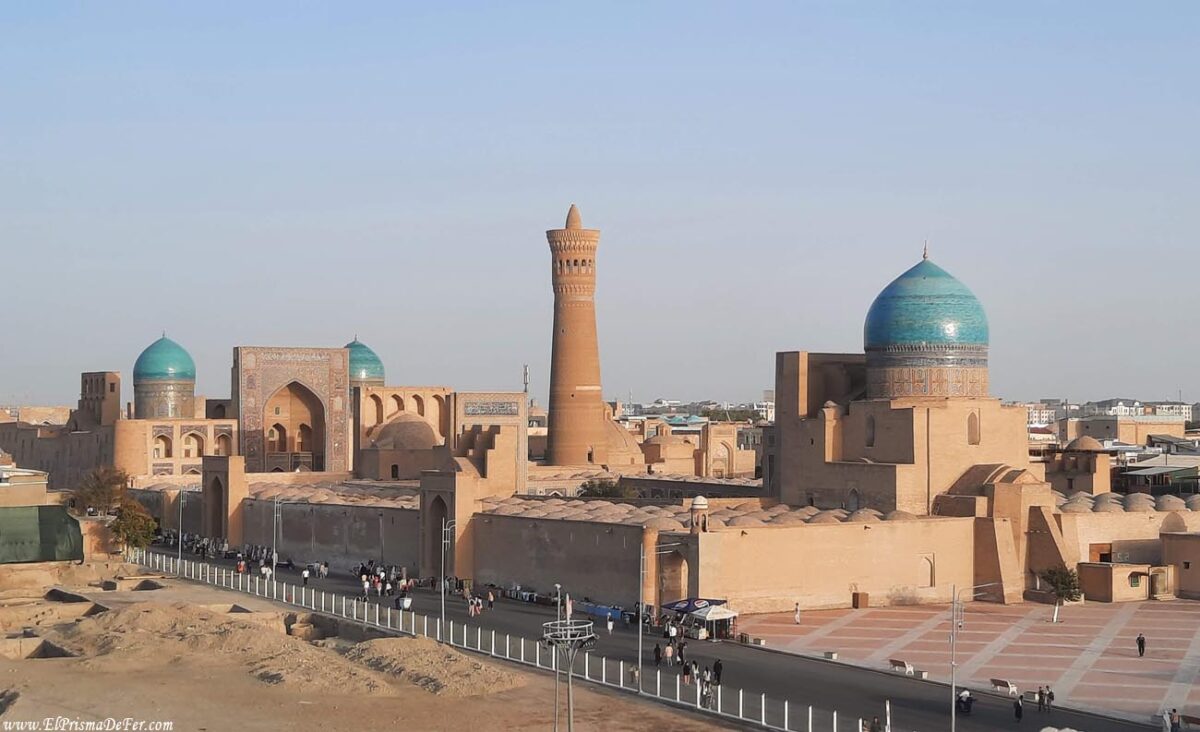
🌙 Mausoleum of Ismail Samani
This small mausoleum was built in the late 9th century as the tomb of Emir Ismail Samani, founder of the Samanid dynasty, who made Bukhara the capital of a Persian-Muslim empire. Remarkably, it survived the Mongol invasion thanks to centuries of burial under sand and neglect, which helped preserve its original structure.
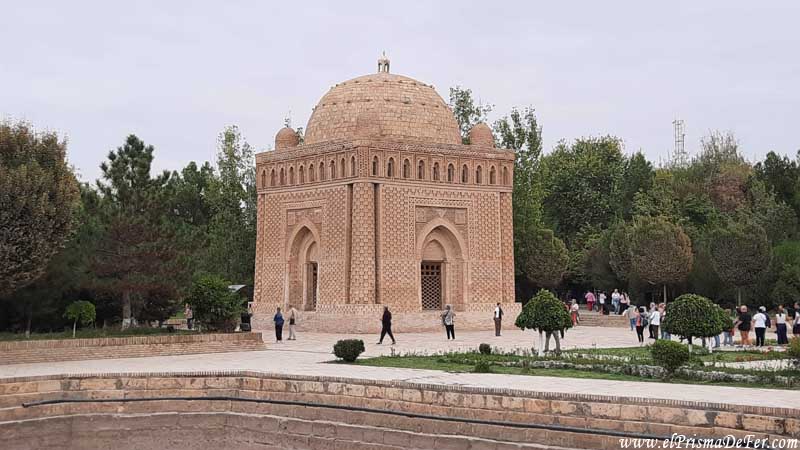
The building is modest in size, but striking in detail: its worked brick creates complex geometric patterns without resorting to ceramics or colors. It is a masterpiece of early Islamic art and a symbol of the cultural renaissance of the Persian world following Islamization. Today, it is considered one of the best-preserved 10th-century monuments in the entire Islamic world.
🧘♂️ Chor Minor
Chor Minor, which means "four minarets," is a unique and charming structure. Built in the 19th century by a wealthy Turkmen merchant as part of a private madrasa, its architecture is quite different from the traditional Bukharan style. Its four towers crowned by blue-green domes give it an almost fairytale-like feel, reminiscent of buildings more typical of India or Persia.
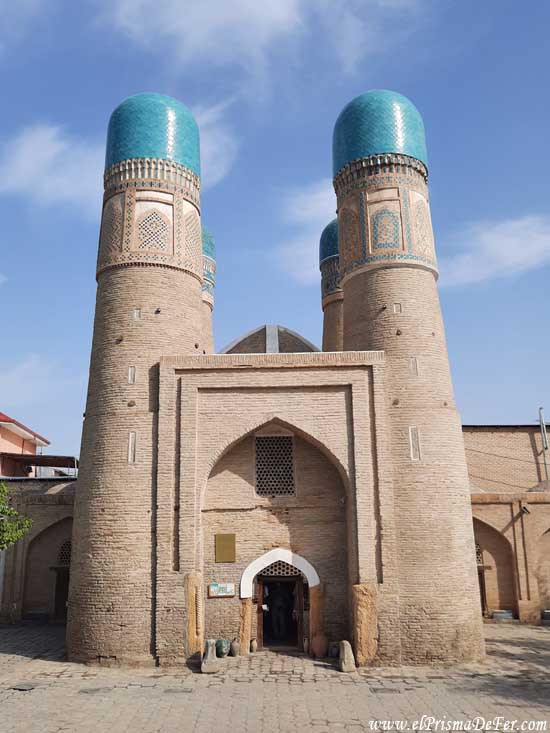
Although the madrasa no longer exists, Chor Minor has become one of the city's most photogenic spots. It's less visited than other monuments, giving it a more peaceful feel. It's a bit far from the city center, but easily accessible on foot or by bicycle. A visit, though brief, offers a different perspective on Bukhara's architectural diversity.
🗼 Bukhara Tower
Opened in 2021, the Bukhara Tower is a modern, 123-meter-high observation deck located on the outskirts of the Old Town. It features a panoramic elevator and a 360° observation deck from which you can see the entire city, including the ancient minarets and the desert landscape surrounding Bukhara. It's a distinct experience that contrasts with traditional architecture and is ideal for those who enjoy aerial views and photography.
🕌 Bolo Haouz Mosque
Located directly across from the Ark Citadel, this 18th-century mosque stands out for its wooden roof supported by carved columns, which are reflected in a pond directly in front, creating a very photogenic scene. Although less monumental than other mosques in Uzbekistan, it has a quiet elegance and is still used for prayer. It is an excellent example of Central Asian decorative art.
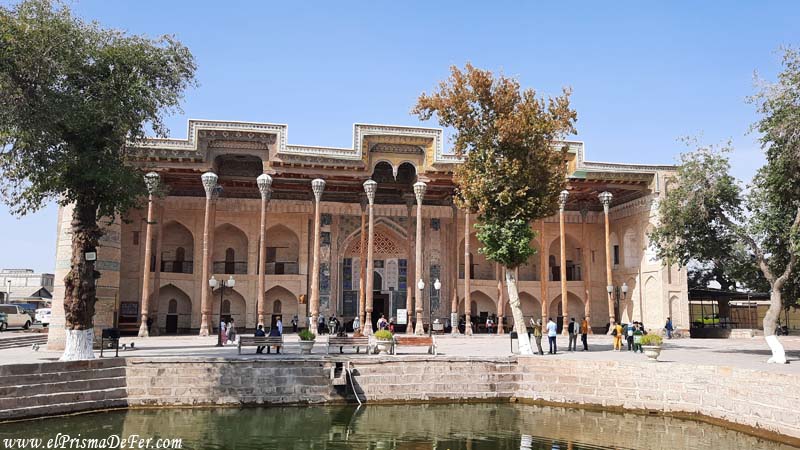
🛍️ Central Bazaar (Bukhara Bazaar)
Located near the Poi Kalyan complex and within the network of historic streets, the central bazaar is the commercial heart of Bukhara. Here you can find everything from hand-woven carpets and suzani embroidery to spices, traditional sweets, and tea. It's a great place to immerse yourself in local life, haggle with vendors, and pick up an authentic souvenir.
💧The Old Water Reservoir (Sitorai Mohi-Hosa)
On the outskirts of the center is this curious building that functioned as a royal water reservoir, part of the summer palace of the emirs of Bukhara. The hydraulic system and ponds are still preserved, and the site can be visited along with the Palace of the Moon and Stars (Sitorai Mohi Hosa), which blends Russian, Persian, and Uzbek architecture in a very pleasant garden setting.
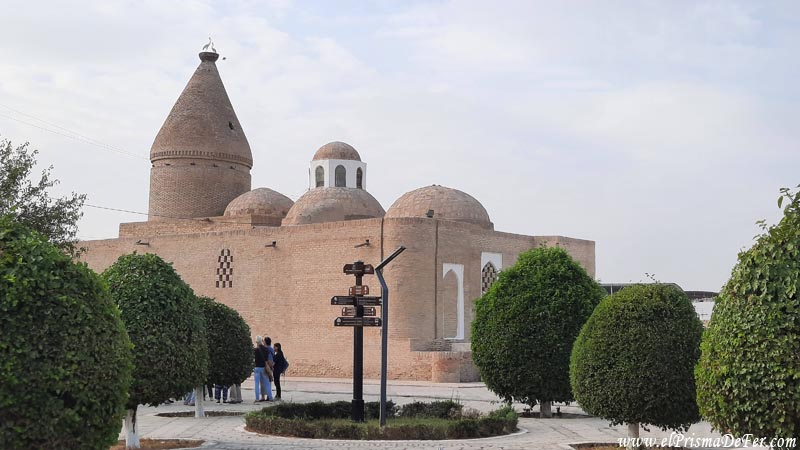
Organized activities in Bujara

How many days is it best to stay in Bukhara?
Ideally, you should spend at least two full nights in Bukhara, although three days allows for a more leisurely experience. The city has the advantage of having its entire historic center very concentrated, so you can visit many of its main monuments in a single day. However, what's really worthwhile in Bukhara is taking the time to walk aimlessly, get lost in its alleys, sit on a terrace overlooking a madrasa, have a cup of tea or coffee, and absorb the unique atmosphere it offers.
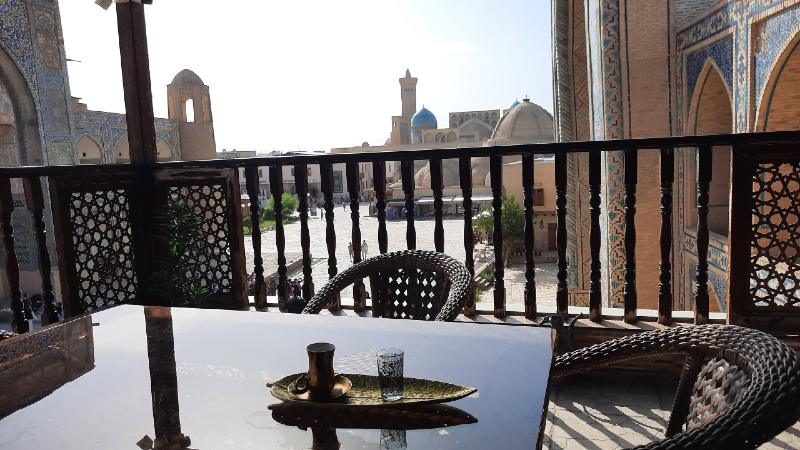
In addition to historical sites like Lyabi-Hauz Square, the Kalon Mosque, and the old caravanserais, there are small museums, traditional tea rooms, and less-traveled corners that can only be discovered by leisurely strolling. Therefore, if your itinerary allows, a 2 or 3-day stay is the best way to connect with the essence of the city, beyond the tourist highlights.
Where to stay in Bukhara
Bukhara is an ideal place to stay in the old town, as most of the tourist attractions are concentrated there. Unlike other large cities, you don't need to travel far by public transport here: everything can be explored on foot if you choose the right area to stay.
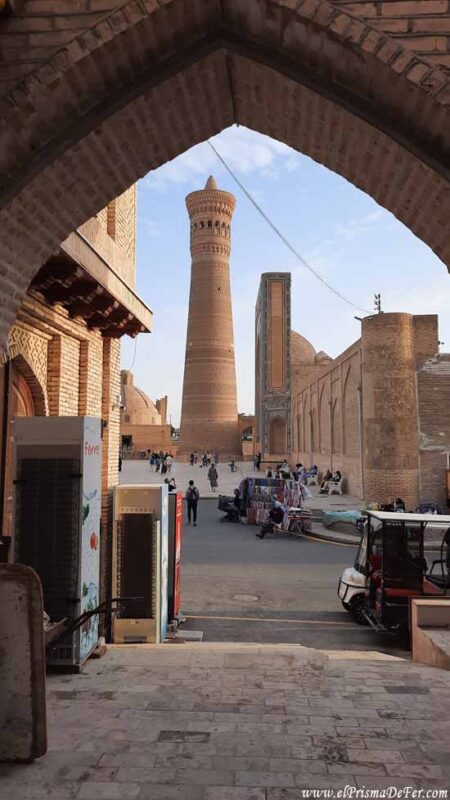
🏘 Historic center: inside the wall
This is the best area to soak up the city's traditional atmosphere. Staying near Lyabi-Hauz Square or the Kalyan Minaret puts you within walking distance of the main monuments, markets, and restaurants. Furthermore, many accommodations are located in renovated old traditional houses, with courtyards, Persian-style decor, and typical Uzbek breakfasts served with local hospitality.
A good example is the Hotel Carava SARAY Mekhtar Anbar, located in what was once a trading post. While it's not the cheapest hotel, you'll be able to sleep in a unique place at a reasonable price.
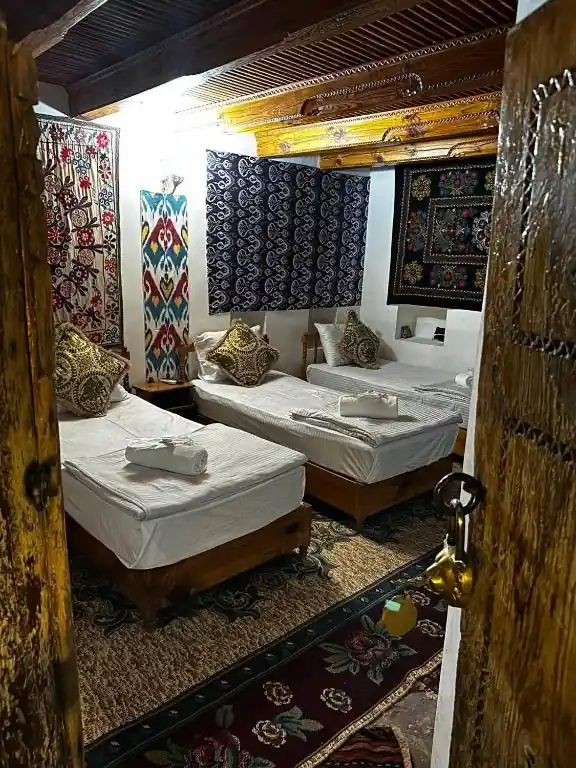
I stayed somewhere else, at Al Bukhari Boutique Hostel. It's super affordable, has very traditional decor, common areas that are great for meeting people, and is close to everything.
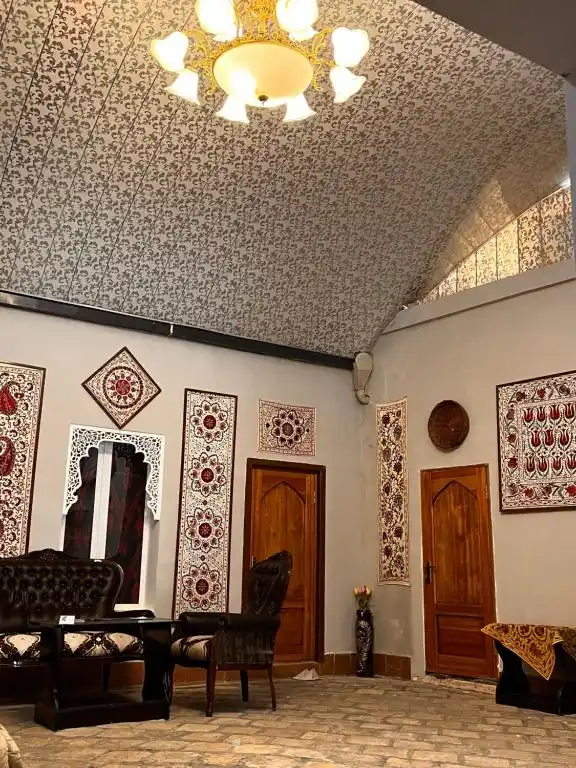
Within this area, there are very affordable guesthouses ideal for backpackers, but also charming boutique hotels with thoughtful details. It's a perfect option for those who want to fully experience the old city, listening to the call to prayer at dawn and strolling through cobblestone alleys without traffic or noise.
🛏 Newer areas or outside the old town
If you're looking for more modern accommodations or ones with international amenities, you can look south of the historic center or toward nearby avenues such as Bahouddin Naqshbandi Street. There you'll find larger hotels, some with services like spas, gyms, or more convenient options if you're arriving by car. Although they're a little further away, they're still no more than a 15-20 minute walk from the main attractions.
It can also be a good area if you're planning to stay longer and want something quieter, or if you're traveling for work or with a group. In any case, Bukhara is a safe and easy city to navigate, so getting around from any accommodation isn't a problem.
Final thoughts on my time in Bukhara
Unlike Samarkand, where the monuments are more dispersed and the modern city dominates many areas, Bukhara has its old town that is compact, picturesque, and steeped in history. Here, everything is more concentrated: madrassas, mosques, minarets, and caravanserais are intertwined, and walking through its cobbled alleys gives the impression of walking through a city frozen in time.
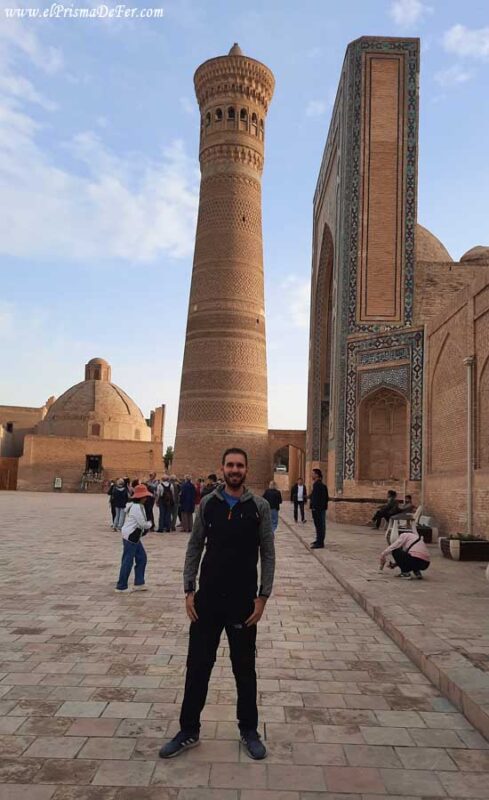
However, this ancient magic is sometimes overshadowed by overcrowding. Organized tours, overcrowded shops catering to foreigners, repeated photos... all of this occasionally shatters the illusion of having stepped back centuries. But if you manage to escape the rush hours, get lost in a less-traveled corner, or simply sit quietly in a shady square, Bukhara reveals its soul once again.
Video from Bukhara
Support The Prism of Fer!
Your support helps me continue creating free content on the blog. Thank you so much!



